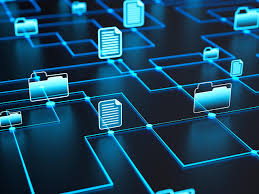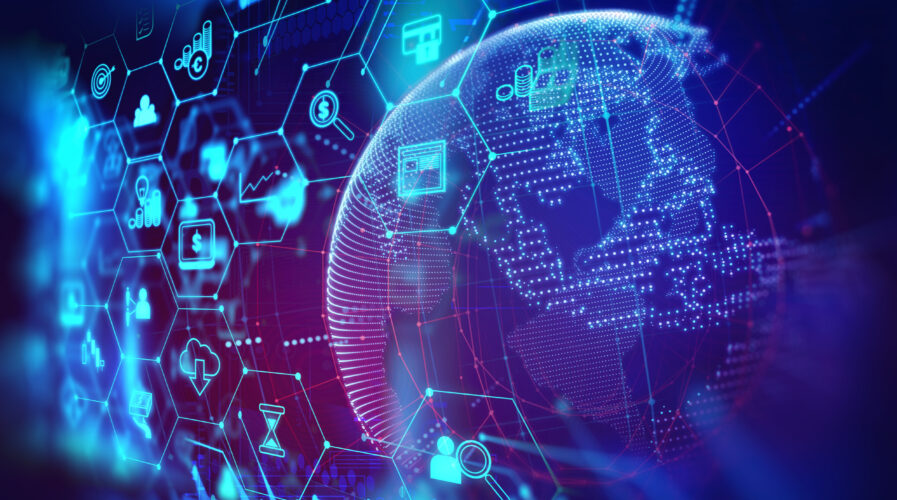What is Digital Data and How is it Used?

In today’s world, digital data is all around us. From the text messages we send to the photos we take, everything we do on our devices generates digital data. But what exactly is this data, and how is it used? In this article, we will explore the basics of digitized data and its applications.
What is Digitized data?
Digitized data refers to any information that is stored and processed in a digital format. This can include text, images, videos, audio, and any other type of data that can be represented using binary code. Binary code is a system of encoding information using only two symbols, usually 0 and 1, which computers can understand and manipulate.
Digitized data is stored on various types of digital storage devices, such as hard drives, solid-state drives, memory cards, and USB drives. These devices use magnetic, optical, or electrical storage to store and retrieve data.
Digitized data is ubiquitous in modern society, as it is generated by almost every electronic device and system, from smartphones and laptops to satellites and industrial machinery. This data is often collected and analyzed to gain insights into patterns and trends, make informed decisions, and improve efficiency and productivity.

Digital data can be structured, meaning that it is organized in a specific format or schema, such as a database table or spreadsheet. It can also be unstructured, such as text data from social media posts or images from surveillance cameras. Regardless of its form, digitized data is often analyzed using various computational techniques, such as data mining, machine learning, and artificial intelligence, to derive meaningful insights and predictions.
However, digitized data also presents challenges related to privacy, security, and ethical use. The vast amount of personal information collected through digital means has led to concerns about data breaches, identity theft, and misuse of personal information. As a result, data protection laws and regulations have been implemented in many countries to safeguard individuals’ rights and protect against abuses of digitized data.
How is digitized data Used?
Digitized data is also used in many other fields, such as healthcare, transportation, and security. For example, digitized data is used in medical imaging to diagnose diseases and injuries, in GPS systems to navigate roads and track shipments, and in security systems to monitor and prevent crime.
Communication: digitized data is used for communication through various platforms like emails, social media, and messaging apps.
Entertainment: digitized data is used to create and distribute entertainment content, such as music, movies, and games.
Business: digitized data is used to manage and store business data, including customer information, financial records, and inventory.
Education: digitized data is used to provide educational content through online courses, e-books, and other digital learning resources.
Research: digitized data is used in scientific research to analyze and model complex systems, such as weather patterns and human behavior.
E-commerce: digitized data is used by e-commerce companies to track user behavior, recommend products, and personalize shopping experiences.
Social Media: digitized data is used by social media companies to recommend content, target ads, and personalize user experiences.
Transportation: digitized data is used in transportation to optimize routes, reduce congestion, and improve safety.
Manufacturing: digitized data is used in manufacturing to improve production efficiency, track inventory, and optimize supply chain management.
Energy and Utilities: digitized data is used in energy and utilities to optimize energy usage, monitor equipment performance, and improve customer service.
Entertainment: digitized data is used in entertainment to personalize content, track user behavior, and provide insights to content creators.
Agriculture: digitized data is used in agriculture to optimize crop yields, track weather patterns, and improve supply chain management.
Sports: digitized data is used in sports to analyze player performance, improve training regimes, and enhance the fan experience.

These are just some examples of how digitized data is used in various industries and sectors. The use of digitized data is becoming increasingly important as more and more businesses and industries move towards digital transformation.
digitized data is a vital part of modern life, and its applications are virtually limitless. With the proliferation of digital devices and the increasing amount of data generated every day, digitized data is set to play an even more significant role in our lives in the future. As such, understanding digitized data and its applications will become increasingly important in the years to come.
In conclusion, digital data refers to any information that is stored in a digital format, such as text, images, audio, or video. This type of data is used in countless ways in today’s world, from personal communication to business operations to scientific research. The advent of digital technology has made it easier than ever to collect, store, and analyze large amounts of data, leading to new insights and innovations in a wide range of fields. However, the increasing amount of digitized data also presents new challenges, such as data privacy and security concerns, which must be addressed to ensure that this valuable resource is used responsibly and ethically. Overall, digitized data plays a vital role in our lives and will continue to shape the future of society in profound ways.


























































































































































































































































































































































































































































































































































































































































![Fixing [pii_email_aa0fea1a78a192ae7d0f] Microsoft Outlook Error](https://www.huffenpost.com/wp-content/uploads/2023/03/What-Causes-the.jpg)
![Fixing [pii_email_aa0fea1a78a192ae7d0f] Microsoft Outlook Error](https://www.huffenpost.com/wp-content/uploads/2023/03/How-to-fix-the-1-1024x1024.webp)
![Quick fixes for the [pii_email_dbd9dd084703ead3b9cf] Mail Error](https://www.huffenpost.com/wp-content/uploads/2023/03/How-to-Avoid-pii_email_b6b14f95f44a83737071-Outlook-Error-1024x576.jpg)
![How to fix the [pii_email_bbf95bff57a974a71da8] in Microsoft Outlook?](https://www.huffenpost.com/wp-content/uploads/2023/03/How-To-Solve-The-pii_email_9e750e335dfd9d75badb-Outlook-Error.webp)
![How to solve the [pii_email_b6b14f95f44a83737071] Outlook Error](https://www.huffenpost.com/wp-content/uploads/2023/03/How-to-Avoid-pii_email_b6b14f95f44a83737071-Outlook-Error.png)
![Ways to fix the "[pii_email_1fb861393abed78ab415] Error](https://www.huffenpost.com/wp-content/uploads/2023/03/pii_pn_56e685559f213991c933-Error-Causes-and-Solutions2.jpg)
![How to Fix the [pii_email_e2f55b4aa7bb667da6d9] Error](https://www.huffenpost.com/wp-content/uploads/2023/03/How-to-fix-the.webp)
![What Everyone Should Know About [pii_email_59ea919492dfc2762030]](https://www.huffenpost.com/wp-content/uploads/2023/03/pii_email_aa0fea1a78a192ae7d0f-Email-Error-and-Its-Solutions-1024x683.jpg)
![How to Fix the [pii_pn_5359771d15a46e7b88bf] Outlook Email Error](https://www.huffenpost.com/wp-content/uploads/2023/03/pii_email_57a4a2f20ec6813a8481-SMTP-Error-Solution-2.jpg)

























































































